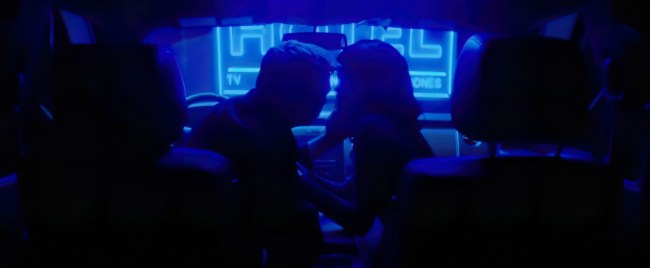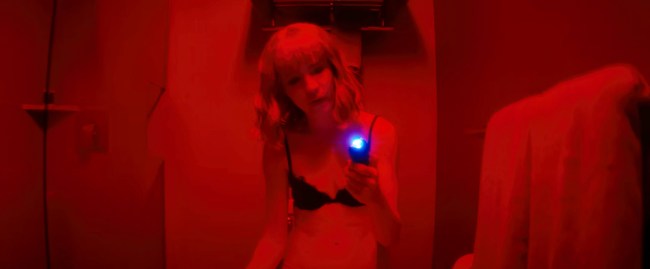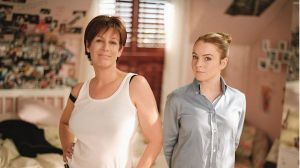
2024-08-24 17:55:02
Writer/director JT Mollner‘s “Strange Darling” (in theaters August 23) is a horror film that immediately grabs the viewer’s attention with the vividness and intensity of its imagery. The opening scene of the movie about the final months of a serial killer opens on a terrifying chase scene in flashes of black-and-white, then moves from one distinctive set piece to another, shifting between bold palettes to use color, light, and framing to recalibrate the viewer’s understanding of the unpredictable relationship at the movie’s center. Mollner throws down the gauntlet with an opening title card informing the audience that this is a movie shot on 35mm film; from that point forward, every richly textured image exists to demonstrate just why it was so important to shoot on celluloid, and to alternately delay and reveal the movie’s many thrilling surprises.
Aside from the plot twists, there’s another big surprise in “Strange Darling,” and that comes when the credits reveal the identity of the cinematographer: Giovanni Ribisi. Though most viewers know Ribisi as an actor from films like “Gone in 60 Seconds” and the streaming series “Sneaky Pete,” he has quietly been honing his craft behind the camera on shorts and music videos for over a decade. “Cinematography is something I have been working on in the back room for the last 15 years,” Ribisi told IndieWire. “It’s something I grew up around and always had a fascination with.”
As a child actor who began in the business when he was 9, Ribisi lived on sets and developed an insatiable curiosity about the camera department and its equipment. He eventually worked with a number of world-class cinematographers, including Dante Spinotti (“Public Enemies”), Reed Morano (“Meadowland”), and Jim Muro (“Horizon: An American Saga”), all of whom welcomed Ribisi’s interest in their work and encouraged his own filmmaking ambitions. “I found that there was an embracing attitude in that world,” he said. “There’s an etiquette there that allows for tutelage and support.”

While Ribisi says his career as an actor has evolved as the result of several conscious decisions, his attraction to cinematography was always more intuitive and instinctual. “It was just something I was inexorably attracted to,” he said. “Cinematographers always felt like magicians — through a lens and certain lighting and a certain F-stop, they turned what they were looking at into cinema.” For Ribisi, an integral part of that magic is shooting on film. “At the end of the day, you can tell stories on iPhones, and people have made incredible movies like that. But I’m definitely a celluloid convert.”
Aside from what Ribisi considers to be a superior image, he says he prefers the actual process of making a movie that’s shot on film. “I don’t want to sound pretentious, but I think it’s important that when the camera’s rolling, we’re burning film,” he said. “Everybody seems to be a little more focused.” Ribisi also pushes back against the idea that film is cost-prohibitive for independent filmmakers. “When you look at a production where you have three different camera crews rolling digital, at the end of the day, there’s 10 hours of footage because they didn’t cut. They were just rolling, and when you think about all of the costs that are incurred with editors going through that and the DITs and everything, you start to go, well, film is almost the cheapest thing on a film set.”

Ribisi bought his own 35mm camera several years ago at a time when shooting film was almost completely out of fashion, and went on to buy more equipment until he finally built his own full-service filmmaking facility. “It’s pretty much soup to nuts including the post,” he said. “I have a film scanner here and other ways to mitigate the costs, which is part of the reason I was a producer on the movie.”
Ribisi’s love of 35mm is what led to the job on “Strange Darling,” as Steve Bellamy from Kodak introduced him to Mollner, correctly assuming that their mutual passion for celluloid would give them a common language. Ribisi says that everyone on “Strange Darling” shared the same aspirations for the film, which helped make the low-budget shoot less stressful. “Often as an actor, you can become disenchanted with a project where you’re around people who don’t feel like they’re professional or holding up their end of the bargain. This was a case where everybody wanted this thing to succeed.”
Ribisi and Mollner meticulously planned their shots, though a lot of their planning required readjustment due to the vagaries of production. “This is a small film,” Ribisi said. “A lot of the choices were extemporaneous, like when we had another location that we had been prepping for the hotel room for six weeks, and at the last minute, that fell out.” In spite — or because — of all the challenges, Ribisi said his appetite for filmmaking is bigger than ever, and he’s eager to apply what he learned to future features. “At the end of the day, I would have to say this was the hardest thing I’ve ever done, and I think JT would say the same thing. And I still couldn’t get enough.”






